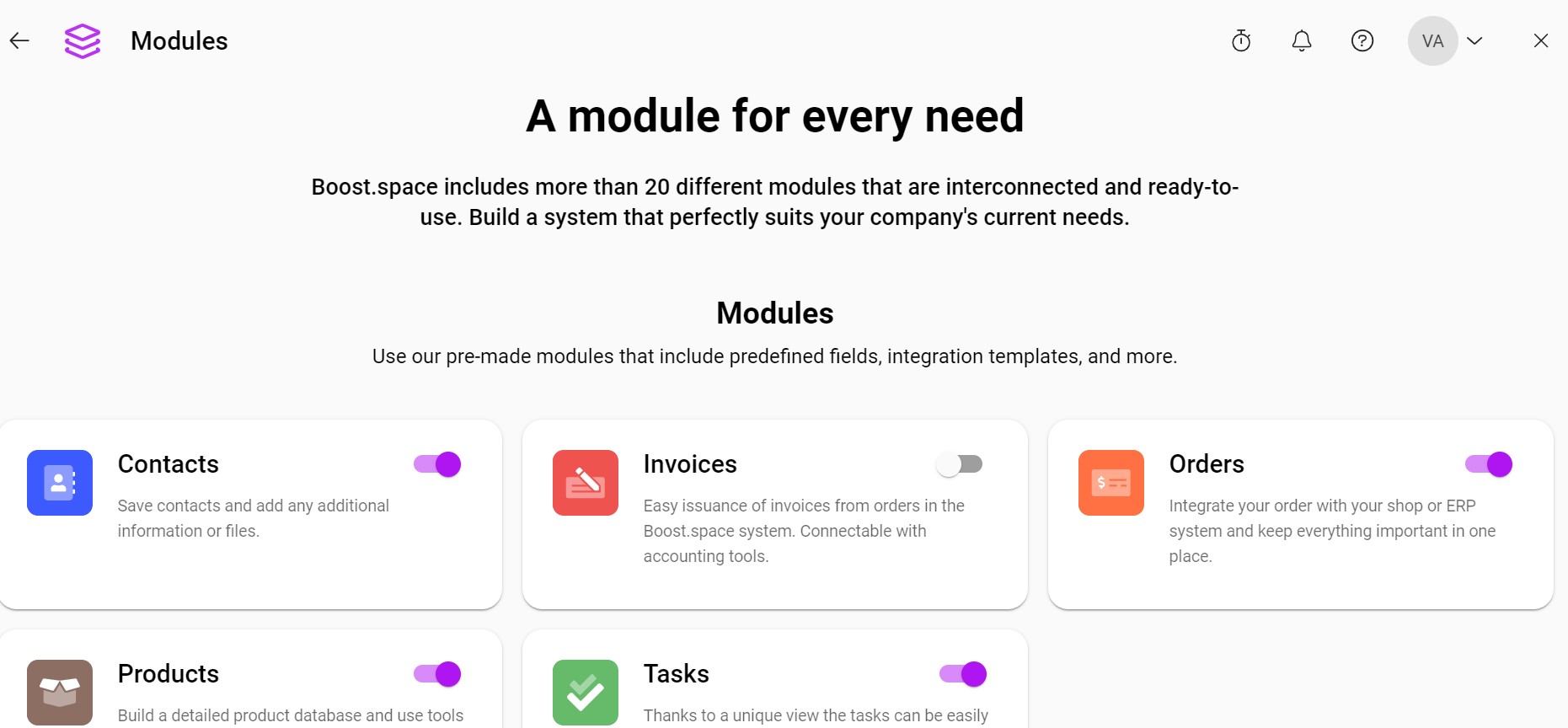Understanding the Difference Between Modules and Spaces in Boost.space
To effectively use Boost.spaceCentralization and synchronization platform, where you can organize and manage your data., it’s important to understand the key components: modulesThe module is an application or tool within the Boost.space system. The entire system is built on this concept of modularity. (module - Contacts) and spacesSubunits are created within modules to maintain organization and clarity, even with large amounts of data.. Though they might seem similar at first glance, modules and spaces serve distinct purposes and functionalities within the system. Let’s dive into the differences between these two essential elements.
Modules
Modules in Boost.space are the building blocks of the platform, designed to handle specific business functions like CRM, project management, inventory, and more. Each moduleThe module is an application or tool within the Boost.space system. The entire system is built on this concept of modularity. (module - Contacts) offers a set of tools and features tailored to manage particular types of data and workflows efficiently. For instance, the CRM module focuses on customer relationship management, while the project management module helps in tracking and organizing tasks.
Modules can be enhanced with addonsTools in Boost.space system. With them you can customize your workflow to fit your company's needs. They offer a range of features from creating forms and managing projects, to chat functionality and more. Each addon integrates with others, enhancing the overall functionality of your workspace., which extend the functionality of the core modules. These addons allow for further customization and optimization of workflows, such as integrating a calendar, managing notes, or tracking work hours. This modular approach ensures flexibility and scalability, enabling businesses to adapt Boost.space to their unique needs. Read more HERE.
Navigating through these modules is user-friendly, with a centralized main desktop and module store where usersCan use the system on a limited basis based on the rights assigned by the admin. can access, install, and manage various modules and addons. You can find more detailed information on this page.

Spaces
Spaces are subunits of modules where data is organized. Spaces act as organizational units that help categorize data logically, making it easier to access and manage. Creating a spaceSubunits are created within modules to maintain organization and clarity, even with large amounts of data. is simple. Users can define a space, assign it a name, and customize its settings. Once a space is created, it can be tailored to specific needs using templates and statusesCreate statuses for each module separately to create an ideal environment for efficient and consistent work., which standardize data organization and streamline processes.
For example, in the contacts moduleOne of the modules of the Boost.space system. In this module, you can easily manage your business contacts., there are three different spaces based on the type of your contacts, and these spaces directly contain the data recordsOne row in the Boost.space database. These are individual rows under spaces in each module. For example single products, but not their variants.. This structure helps keep the modules organized. Each space has its own roles: ownerCan manage members, managers and owners of a specific space. Can view and manage items. Can edit settings of a given space., managerCan manage members and space managers, view and manage items. Can modify space settings., and memberCan view and manage items while using existing statuses and labels.. You can find more detailed information about spaces on this page.
In essence, modules deliver the tools and functionalities, while spaces provide the structure and organization needed to manage data effectively within those modules.
